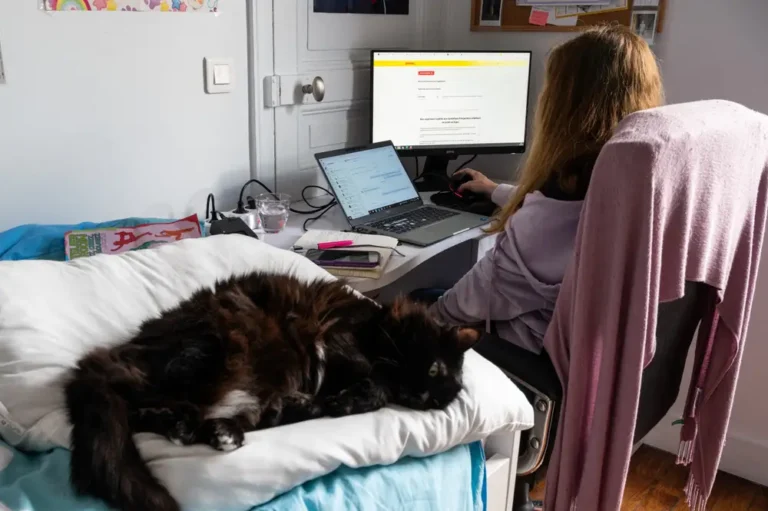Morgan Stanley’s new innovation head lays out his plan for more OpenAI-type partnerships

Morgan Stanley’s Sean Manahan at the bank’s Tech Week event in Palo Alto, California.
When Morgan Stanley and OpenAI announced their blockbuster partnership at the beginning of 2023, it signaled a competitive advantage for the Wall Street bank.
Morgan Stanley, since then, has co-developed a handful of generative AI tools with the AI powerhouse for its lucrative wealth-management business. Morgan Stanley is far from the only financial firm using OpenAI. However, the strategic partnership has afforded the bank early access to OpenAI’s new products and the ability to test and customize them in the bank’s innovation lab, which spans some 18,000 square feet in the bank’s 1 New York Plaza office in Manhattan.
The spark for the partnership can be traced back to 2021 when a team at Morgan Stanley responsible for scouting tech vendors met with an up-and-coming research nonprofit to evaluate its applicability in the financial services industry.
“We were trying to figure out, how is this technology or capability going to support our business?” Sean Manahan, whose team took that meeting, told B-17. Reporting their findings back to then-wealth management leaders Andy Saperstein and Jeff McMillan, “We were able to show them, ‘Here’s something that’s emerging that we’ve been monitoring and researching,’ and they got it, and it clicked, and it took that next-level jump in terms of, this is something we realize is going to be important to us.”
Now, Manahan is looking to replicate that success as he settles into his new role as Morgan Stanley’s head of firmwide innovation after a week meeting with technology leaders and the bank’s top executives.
In his new role, Manahan oversees the bank’s innovation council, which launched at the beginning of the year. The council is dedicated to identifying the bank’s technology focuses. These days, those areas include managing and governing data consistently across businesses rather than individually, AI and the impact of AI-driven agents, and the future of software engineering. This is to ensure Morgan Stanley can take advantage of external innovations, just as it did with Zoom before the pandemic and OpenAI ahead of Wall Street’s generative AI push.
“We understand how innovation occurs, we understand how market innovation happens, and we understand how to meet that moment and then mentor companies and help them grow,” Manahan told B-17 in his first interview since his appointment in April.
A week in Silicon Valley
In September, Manahan and a slew of other Morgan Stanley execs touched down in Silicon Valley for Tech Week — from each business division, the innovation council, the firmwide AI team, cybersecurity, legal, compliance, and risk, to name a few.
Morgan Stanley hosts the event to meet with tech companies of all sizes, from early-stage startups to established and growing companies and Big Tech giants, as well as people in the venture capital community. More than just learning about new advances in data governance, AI, and the future of engineering, Morgan Stanley execs are expected to align internally and with third parties about their priorities and desired outcomes.
“Coming out of three intense days inside the Valley and meeting with all these interesting companies and thought leaders like VCs, they now come back to Morgan Stanley with a whole new set of different ideas and outcomes that they want to drive as they think about 25, 26, 27,” Manahan said of the event and its impact on the company’s road map over the next three years.

Sean Manahan is Morgan Stanley’s head of firmwide innovation.
Getting down to business
Upon returning to New York, Manahan now has to figure out how to ready the bank for emerging technology trends. He and his 50-or-so reports aim to bring alignment between the innovation council, the work in the lab, and the businesses and set a blueprint for how the bank will execute its technology initiatives.
This also helps focus the work they do with the roughly 250 projects that go through Morgan Stanley’s innovation lab, which are each tied to a business objective and sponsored by the business, Manahan said. Companies are identified through organic discovery and inbound referrals from other groups within the firm.
“We work with the business on experimenting, evaluating them, and then it’s up to them, the business, to make a decision on how to take it forward,” Manahan said.
One theme he is keeping a close eye on is the evolution of generative AI.
“What we’re starting to see a shift towards executive functions, that these tools can plan, they can create tasks themselves, they can interact with the humans to say: ‘I’ve planned this, does this look right to you? I’m thinking about doing this next, is that right to you?’ And then they execute based on this human guidance,” Manahan said of AI agents.
AI agents, which can execute task-based workflows that are human-approved, could be the next step after AI co-pilots, which are more like somebody helping you, sitting next to you, and assisting you, Manahan said.
To be clear, AI agents aren’t something the bank is currently adopting, Manahan said, “but it’s where the market is evolving towards and where we see the next leap forward for this technology.”






